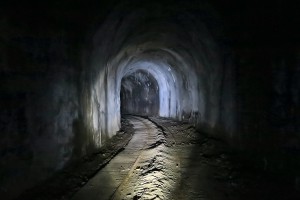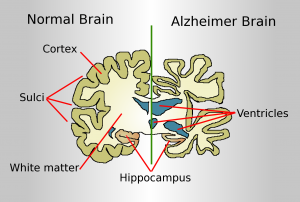Could ‘Feeling Lost’ Be the First Sign of Alzheimer’s?
We’ve all been there — our minds seem to blank out on us for a brief moment, before we shake it off and refocus.
This is especially true as we age, and in some cases, individuals feel as though they’re lost — even for just a brief moment.
For those who have experienced slight cognitive decline in the later stages of life, you may relate to this type of experience. Panic begins to set in, and you can’t help but think to yourself — am I showing signs of dementia?
Well, according to the latest research, getting lost may be one of the first critical signs.
The Role of Spatial Navigation and the Onset of Alzheimer’s
For those who have seen the inspiring film, Alice — you likely remember the scene where Julianna Moore suddenly becomes lost on campus. Being a professor, she has walked (and jogged) that area many times before. You can tell from that exact scene how overwhelming this experience can be.
Recently, the Prevent project, based out of Edinburgh University, made a rather interesting discovery. It appears that issues related to navigation may be one of the first indicators that Alzheimer’s may affect you within your later years. This is the first key finding within a long-term study regarding the initial effects of dementia on the human brain.

We now know that even though late-onset dementia does not generally show symptoms until an individual is around 60+ years of age — damage to the brain had occurred long before noticeable signs surface. This is also why so much research has focused on preventative measures.
Here’s where it really gets interesting.
We have always viewed Alzheimer’s as a disease that impairs one’s memory — which in many ways it does. On the other hand, researchers are now considering the possibility that, “the true difficulty individuals experience, is their ability to visualize the location of objects, as well as themselves.”
Funded by the Alzheimer’s Society, this study focused on two key groups:
-
The first, included participants aged 41 to 59. These individuals had close relatives who had developed dementia and are considered to ‘high-risk’ participants.
-
Within the second group, these individuals had not yet been directly or indirectly affected by Alzheimer’s disease.
What they found, was that those who were at a higher risk, showcased poorer results on a test that measured their ability to visualize where they were — in terms of their position. When looking a little closer, they also noticed that these individuals had a smaller hippocampus — the region of the brain that relates to navigation. These results will be published in Alzheimer’s and Dementia.
Although there is a lot that we can take away from this study, one of the most important ‘ingredients’ is the realization that this isn’t just a disease of the elderly. As seen in this study, individuals in their 40s and 50s can significantly contribute to current research efforts and possible long-term solutions.
→ If interested, here is another key study that was published in 2016 regarding spatial navigation in preclinical Alzheimer’s — published in the Journal of Alzheimer’s Disease.
What Other Signs Should I Be Aware Of?

While focusing on the classic signs of dementia — it’s important to note that not everyone has the same experience. Of course, the cause of one’s symptoms will play a major role, as someone who has suffered a head injury, will likely differ in terms of someone who is developing Alzheimer’s.
Some of the most common signs of Alzheimer’s, for instance, will include:
- Memory loss that is beginning to interfere with everyday life
- Difficulties problem solving and planning
- Confused in terms of time and location
- Issues surrounding communication
- Misplacing things, unable to retrace one’s steps
- Decreased ability to make decisions, resulting in poor judgement
- Changes in mood and personality
- Withdrawing from work or social situations
New Research Regarding the Structural Indications

Although briefly discussed in the study above, we often focus on the tangible symptoms in which we experience or witness. Although these provide clues regarding cognitive health, sometimes, we need to dig a little deeper — or in this case, scan a little more thoroughly to make new connections.
Recently, a team from the University of Toronto, conducted a study that once again, shows that there may be some early warning signs that we have not focused on in the past. By scanning a region of the brain known as the anterolateral entorhinal cortex, an area where Alzheimer’s tends to originate, researchers found some interesting clues.
Here is a summary of their methods and results:
- Studying 40 individuals who were between the ages of 59 and 81, the researchers were interested in how the structure of one’s brain changes. These individuals either lived alone or with a spouse.
- Of course, the brains of these participants were scanned, in addition to being given the Montreal Cognitive Assessment dementia screening test.
- What they found, was that those who scored lower than 26, in comparison to those who scored 26 or above, displayed less tissue within this key region of the brain, as discussed above. In fact, this region is where the strongest volume differences were observed.
- Within their follow-up, these researchers would now like to determine whether or not those who demonstrated poor memory and thinking skills, in addition to having smaller brain volumes, do in fact, develop dementia.
Once again, this could allow for early intervention — which appears to be the most critical step in preventing or delaying the progression of Alzheimer’s disease in the future.
If you or a loved one have noticed any abnormal signs, please seek a professional opinion as soon as possible. The sooner you intervene, the more options you will likely have.